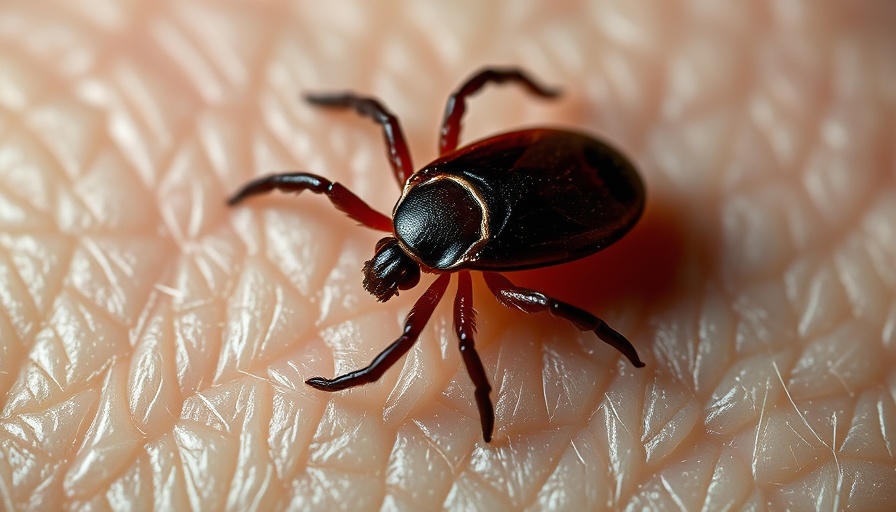
Understanding the Tick Threat: Why Prevention is Key
As warmer weather coax people outdoors, the resurgence of ticks becomes an imminent threat. Health experts emphasize that preventing tick bites is the most effective defense against tick-borne diseases, including Lyme disease, which can lead to debilitating health problems.
Tick Population Surge: What to Expect This Year
Ticks are not just a summer nuisance; their activity begins much earlier in the year than many realize. According to health officials in New Hampshire, ticks can emerge as early as February, presenting a risk even in the chillier months. Understanding their life cycle and behavior patterns can help individuals and pet owners better prepare for the risk.
Proven Prevention Techniques for Humans and Pets
The CDC recommends effective prevention strategies for anyone venturing into tick habitats. Wearing long sleeves and pants, and treating clothing with insect repellents containing permethrin are advised measures. For pet owners, using veterinarian-recommended prevention products such as topical treatments or tick collars is crucial. Regular tick checks for both humans and pets after outdoor activities can significantly reduce the risk of bites.
The Importance of Tick Checks: What to Look For
Conducting thorough tick checks post-outsides excursions is paramount. Ticks often hide in warm, shaded areas such as behind the ears, under arms, and around the neck. For pets, areas around the head and neck are notoriously common hiding spots. Remove any ticks you find promptly with fine-tipped tweezers—grasp them close to the skin and pull straight out to minimize infection risk.
Stay Informed: Utilizing Technology to Combat Ticks
For those who are concerned, the CDC offers a helpful interactive tool called the Tick Bite Bot, which assists individuals in understanding when it is necessary to reach out to a healthcare provider based on the tick species and duration of attachment. Staying informed is an essential part of tick prevention.
Long-Term Health Considerations: Monitoring for Symptoms
Regular check-ups can expedite the detection of any potential issues stemming from tick bites. Experts recommend yearly blood tests for pets to check for tick-borne diseases, ensuring that problems are detected before they manifest into troubling symptoms for pets and humans alike.
Community Awareness and Education: A Shared Responsibility
Given the rising prevalence of ticks, community awareness and education must be a collective effort. Pet owners, parents, and outdoor enthusiasts should communicate the importance of protective measures to their communities. Engaging in discussions about tick prevention with neighbors could significantly help bolster local practices and strategies to minimize risks.
Conclusion: Take Action against Ticks Now
As tick season approaches, equip yourself with the knowledge and tools to protect yourself and your pets. By understanding the risks and implementing effective prevention strategies, you can enjoy the great outdoors safely. Reach out to your local health department or veterinarian for more information and stay informed about any reported tick activity in your area. Now is the time to act—ensure your outdoor activities remain fun, secure, and tick-free!
 Add Row
Add Row  Add
Add 




 Add Row
Add Row  Add
Add 

Write A Comment